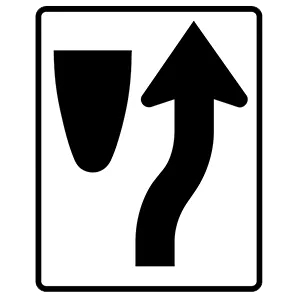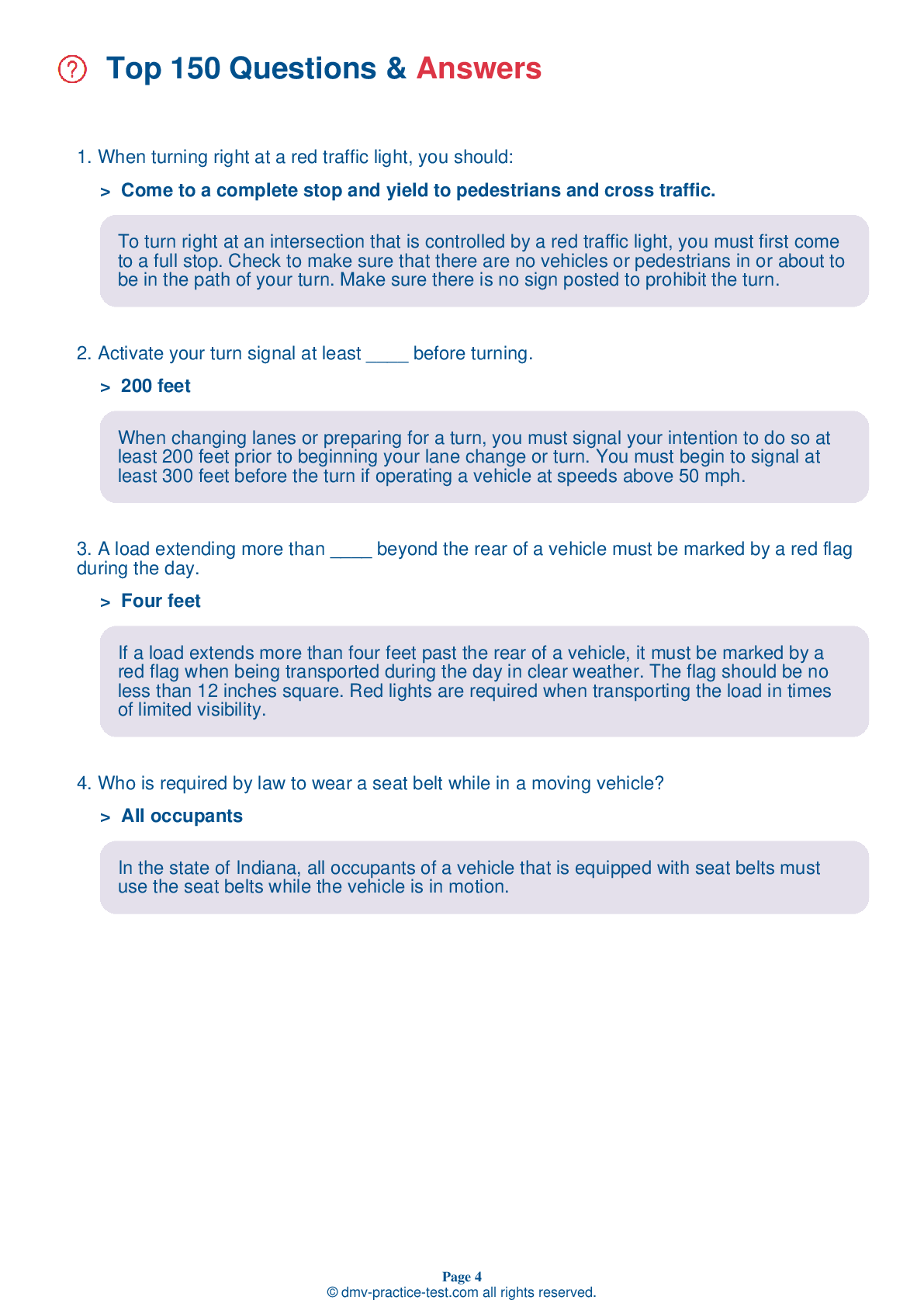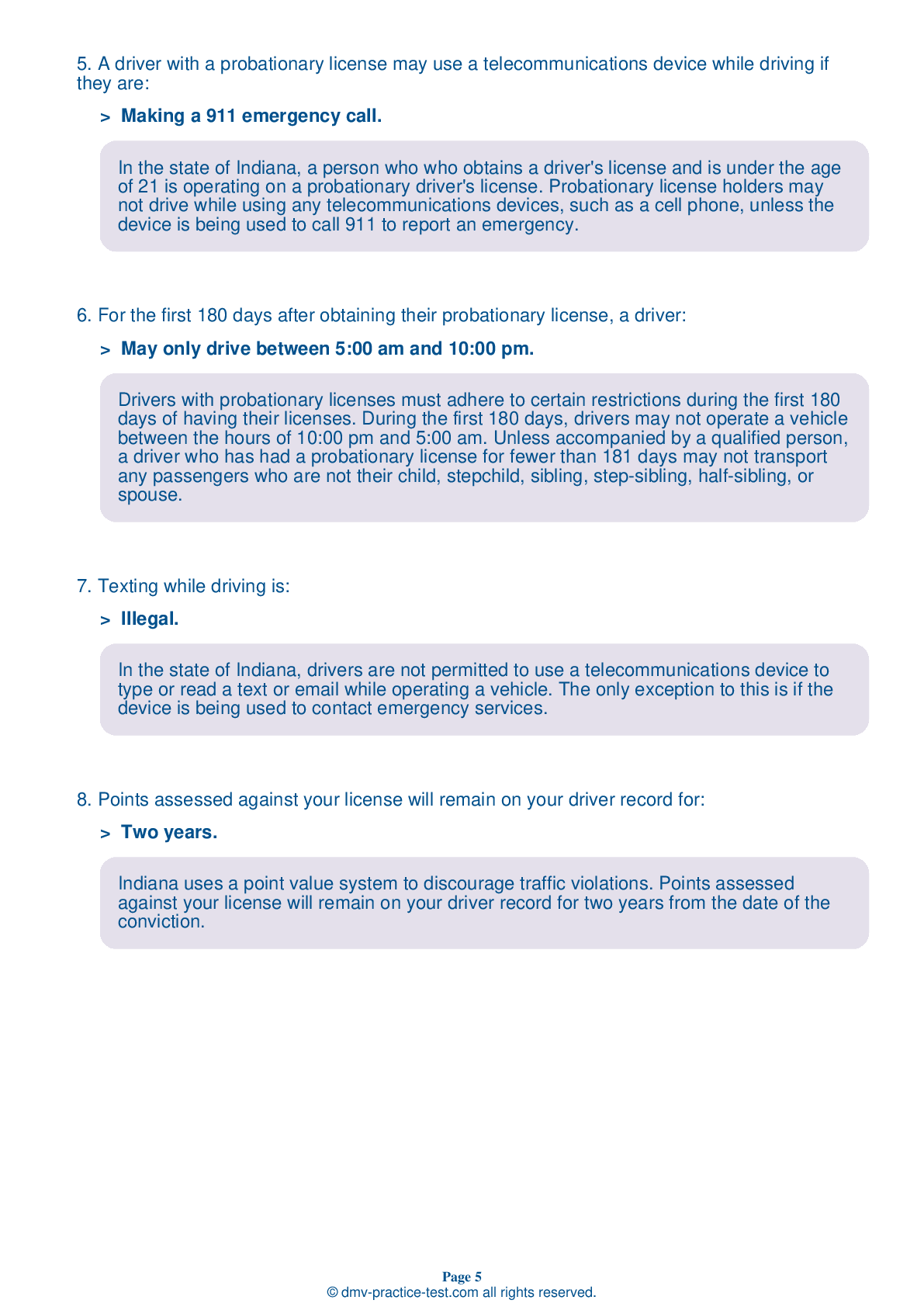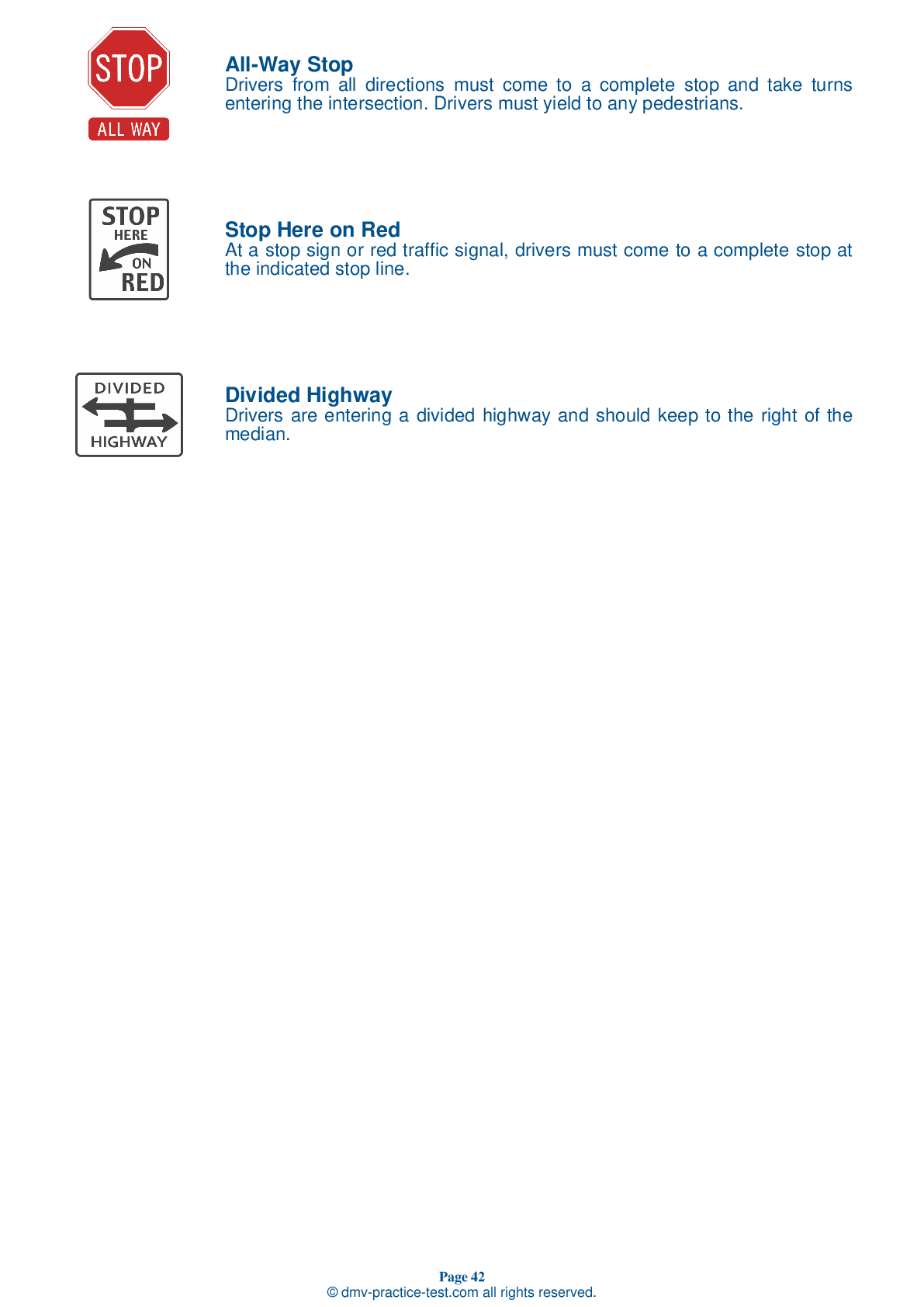FREE Indiana DMV Practice Test #3
This set of Indiana DMV practise tests has been updated for January 2026. It includes questions based on the Indiana Driver Handbook's most significant traffic signals and laws for 2026. Use actual questions that are very similar (often identical!) to the DMV driving permit test and driver's licence exam to study for the DMV driving permit test and driver's licence exam.
On the practise exam, each question gets a tip and explanation to help you remember the concepts. The written component of the official Indiana DMV test will include questions about traffic rules, traffic signs, and driving statutes, as well as information from the Driver Handbook.
To obtain a passing grade, you must correctly answer 44 of the 50 questions. Take our DMV practise exam to help you prepare for your Indiana instruction permit or driver's licence.
The DMV exam is available in several languages.
Using any kind of testing assistance will result in an automatic fail, and the DMV may take additional action against your driver's licence, so stay away from it.
1 . When you want to make a right turn, your car must be:
As you prepare to make a right turn, you should get as far to the right side of the road as possible. Do not cut across lanes of traffic to perform any turn.
2 . Your body gets rid of approximately:
The average person’s body will process about one alcoholic drink in one hour. However, many factors play a part in determining how impaired a person will become when consuming alcohol, including the amount of alcohol consumed, how fast it is consumed, and a person’s body weight, food intake, and general health.
3 . What should you do when you are going to enter a roadway from a private road?
When entering a roadway from a driveway or private road, you must yield the right-of-way to pedestrians and traffic on the roadway.
4 . You need to use extra caution when driving near a pedestrian using a white cane because:
When driving near a blind pedestrian who is carrying a white cane or walking with a guide dog, you must slow down, yield the right-of-way, and then proceed with caution. Be prepared to stop your vehicle in order to prevent injury or danger to the pedestrian.
5 . You may cross double solid yellow lines:
Double solid lines indicate that you may not pass or change lanes. You cannot cross the lines unless it is to turn left to enter or exit a highway, to turn into or from a driveway, or to make a U-turn (where permitted).
6 . This sign means:

This sign indicates that you must keep to the right of the upcoming divider.
7 . When making a right turn on a green light, you must:
Unless a posted sign prohibits it, you may turn right or left at a steady green light. When turning, you must yield to other vehicles and pedestrians within the intersection.
8 . When a vehicle with an Anti-Lock Braking System starts to lose traction on a slippery road, drivers should:
If their vehicle loses traction on a slippery road, a driver with an Anti-Lock Braking System (ABS) needs to press down hard on the brake pedal, hold it, and steer out of danger. In an emergency situation, the ABS automatically pumps the brakes at a faster rate than the driver could. Removing steady pressure from the brake pedal or pumping the brakes will disengage the ABS.
Need Car Insurance? No problem!
Compare the best rates in Indiana and find a personalized policy that meets your needs.
1. Are You Currently insured ?
2. Married ?
3. Do you own your Home?
4. Do you have more than 1 car ?
5. Have you or a Family Member Honorably Served in U.S. Military ?
6. Your Name
7. Age
8. Zip code
IMPORTANT REMINDER:Auto Insurance is Mandatory to drive in Indiana. Get covered before you hit the road to avoid any fines.
Ranked by best match



